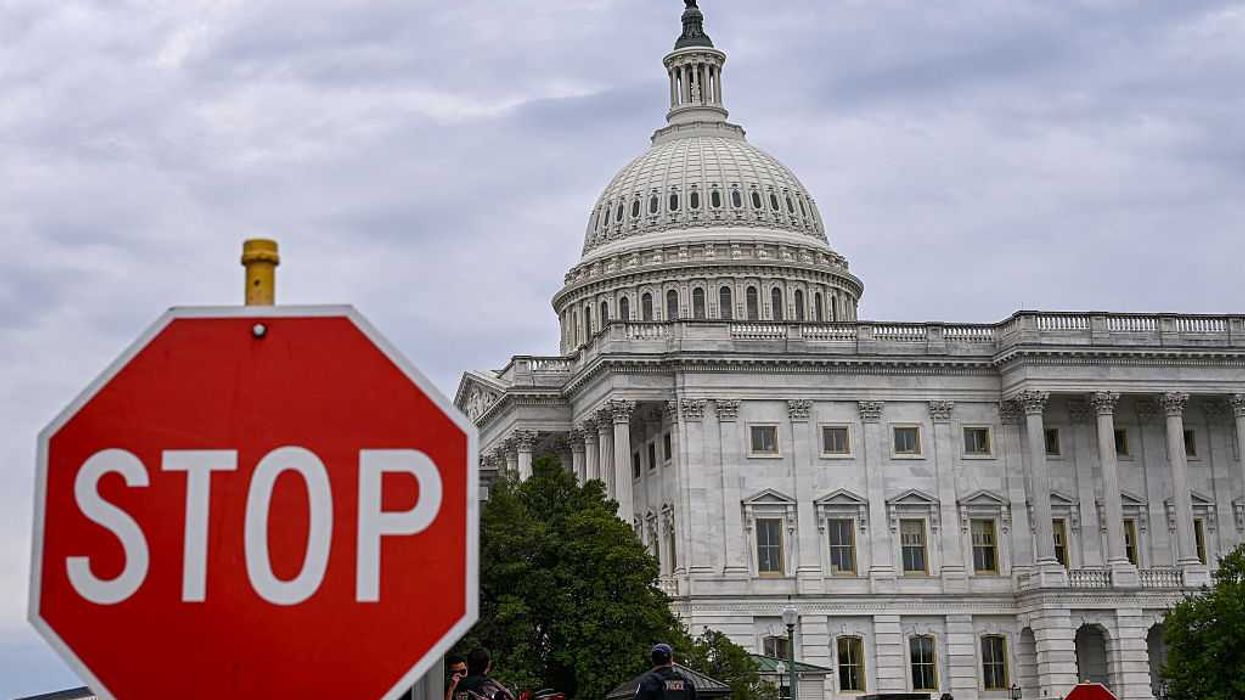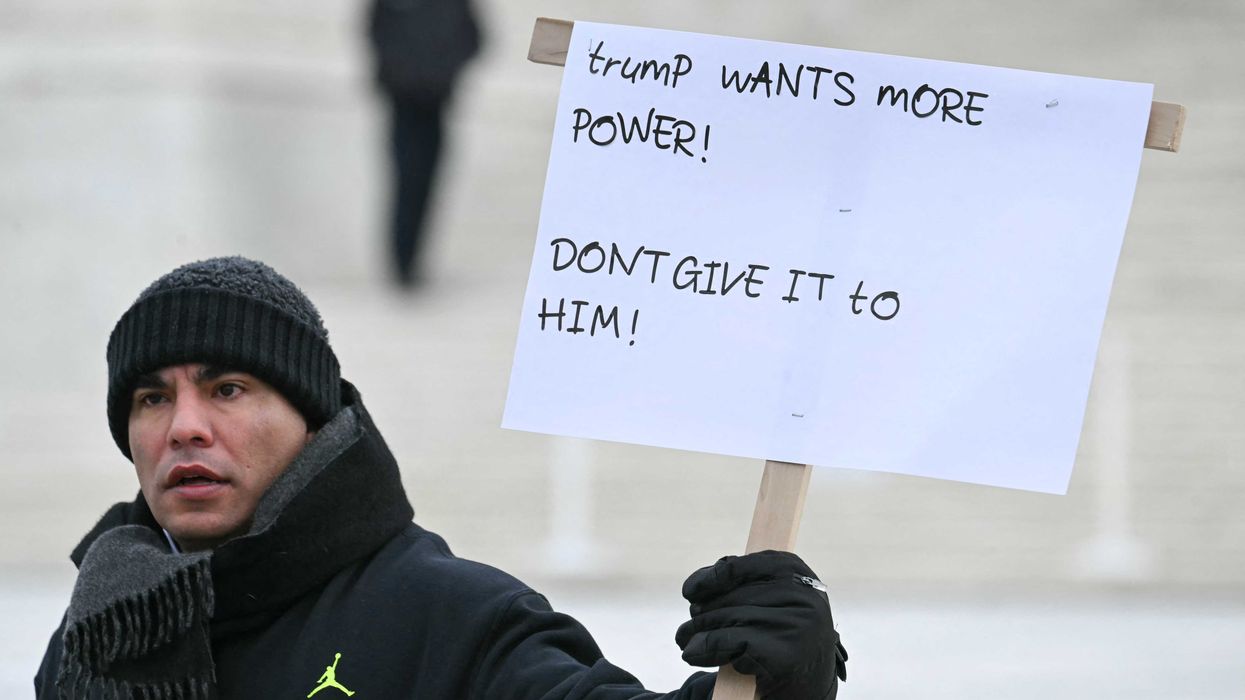Glenn's audience has spoken loud and clear: they do NOT want the U.S. to send further aid to Ukraine and to engage in a bigger worldwide conflict. However, if history indicates anything, that is EXACTLY where we are heading.
If you tuned into last night's Glenn TV special, you heard Glenn give both pro AND con arguments for giving ongoing aid to Ukraine. Here are the top 5 reasons why people believe the U.S. should continue supporting Ukraine—and why they're wrong. Get the FULL research and arguments that went into the episode HERE.
1. “Defense of Democracy”
What they say: This is the mantra touted by Biden himself and all across the mainstream media. This idea is that Democracy is the most humane form of government, and any system that’s different leads to the oppression of their people. Therefore, if the U.S. truly believes in democracy, the U.S. will defend it when it is under attack abroad.
Why they're wrong: Defending democracy is NOT our job. Defending the U.S. is. Isn't it ironic that the same people accusing the Right of being "war hawks" and the "world's police" during the U.S. presence in Iraq and Afghanistan are the same ones calling for a perpetual presence in ANOTHER part of the world, "as long as it takes"? Not only should we not be the world's democracy police, but it would also be financially irresponsible to do so. Inflation is at an all-time high and the U.S. oil reserves and military arsenal are being depleted. What if we get pulled into a conflict that WE don't have the resources for? It's time to take care of our home front and have Europe step up to the plate in funding THEIR regional crisis.
2. “Rules based order”
What they say: You’ve probably heard the establishment use this phrase quite often. George H. W. Bush originally called this idea the “New World Order,” but that sounded a bit too scary so they changed it. The idea is that the international community collectively holds rules that everyone is expected to follow. Proponents of sending aid to Ukraine argue that unless the West holds Russia accountable for violating the "rule-based order," the order will collapse—because it would have no teeth.
Why they're wrong: Though a nice idea, an ideal "rule-based order" is untenable. Why? A country's national interests often don't "jive," with the rest of the world—and it's hard to tell a country to stop pursuing its own interests. For example, what if 90 percent of one country's GDP comes from fossil fuels, but the “rules-based order” calls for massive cuts to DIRTY energy? Sound familiar?
Here’s another "hypothetical" situation. What if Country A doesn’t want Country B to join a hostile alliance—let’s just say NATO—but the hostile alliance continues to expand towards Country A. Would it then be in their best interest to intervene to stop Country B? It might be in their interest, but NOT in line with the “rules-based order." Doesn't that also sound familiar?
Bottom line: This idea of maintaining a "rules-based order" harkens back to the downfalls of the U.S.'s role as the world's democracy police. It's both untenable and irresponsible foreign policy.
3. Russia won’t stop with Ukraine
What they say: There are reports that Moldova is now fearing they could be next on Russia’s invasion list. Putin has stated that the collapse of the Soviet Union was the greatest geopolitical catastrophe in history. What if he wants to reclaim ALL of the territory they once had? Could Poland be next? Romania? Hungary? Why would Putin stop at JUST Ukraine if he’s willing to go this far? The argument would be that Russia must be stopped NOW. If Russia is stopped now, then we save ourselves from entering a larger war later.
Why they're wrong: This is the same "democracy police" argument reiterated over and over again justifying the U.S.'s involvement in war. President Lyndon Johnson said he wasn't going to send "American boys 9 or 10 thousand miles away from home to do what Asian boys ought to be doing for themselves." That view didn't last very long. Within months, the U.S. troops were deployed for what turned into an eight-year war to stop the spread of Soviet sovereignty. Have the Democrats forgotten that they were against the 20-year-long U.S. presence in Afghanistan? We are walking into the same cycle that has plagued the U.S. government for the past 100 years: we become the world's "democracy police" at our own expense.
4. Russia won’t go nuclear
What they say: Mutually Assured Destruction didn’t just STOP becoming a thing. The threat is still there. This war will be fought conventionally for as long as it takes. As long as the Russian regime and homeland are not directly at risk, the nuclear threat is merely just that… a threat.
Why they're wrong: Glenn just published an article detailing the research into one of the most influential individuals in Russia, the political philosopher Alexander Dugin. Dugin's political philosophy calls for the "cleansing" of the world by destroying it. His growing following of Eurasian nationalists call for the dominance of the "Rus" people, rising from the chaos of mass destruction to become the world's new leaders. He is one of Putin's closest advisors, and now, Putin has been using his language when invoking the "nuclear option" in response to ongoing Western aid to Ukraine. Former Russian President Medvedev has also used Dugin's language to justify the use of potential nuclear warfare.
Bottom line: The most powerful people in Russia's government are being influenced by a political philosopher who wants the destruction of the world as a vessel to bring about Russian nationalist dominance. He doesn't shy away from nuclear warfare—he would welcome it as a "cleanse" of the human race. Mutually Assured Destruction isn't as big of a deterrent to the Russian government as we would like to think.
5. A larger global war is not a threat
What they say: Russia can barely handle Ukraine. They definitely can’t afford a fight on multiple fronts.
Why they're wrong: Even if it's true that Russia can't handle a global war on its own, they are not alone. Russia is quickly building a new anti-Western coalition, a new 21st Century Warsaw Pact, with the biggest enemies of the West: Iran, China, and North Korea. Iran has already become a weapons partner with Russia, sending Russia military drones and opening a military manufacturing plant IN Russia. Do we want to go to war with Russia, who has a military alliance with a sworn enemy of the U.S. with near weapons-grade uranium enrichment?
Furthermore, U.S. intelligence reports say that China is considering supplying military aid to Russia, if they haven't already. This comes amid the visit of Alexander Lukashenko, the dictator of Russia-ally Belarus, a border nation with Ukraine, meeting President Xi in China to solidify military ties. Intelligence reports have also found that Russia has been illegally importing weapons from North Korea against international sanctions.
Is Russia really "alone?"
Bottom line: Even if Russia couldn't handle a world war on its own, an alliance between Russia, China, Iran, and North Korea certainly could. Do we want to take that risk?

 ALEX WROBLEWSKI / Contributor | Getty Images
ALEX WROBLEWSKI / Contributor | Getty Images
 JIM WATSON / Contributor | Getty Images
JIM WATSON / Contributor | Getty Images Joe Raedle / Staff | Getty Images
Joe Raedle / Staff | Getty Images AASHISH KIPHAYET / Contributor | Getty Images
AASHISH KIPHAYET / Contributor | Getty Images